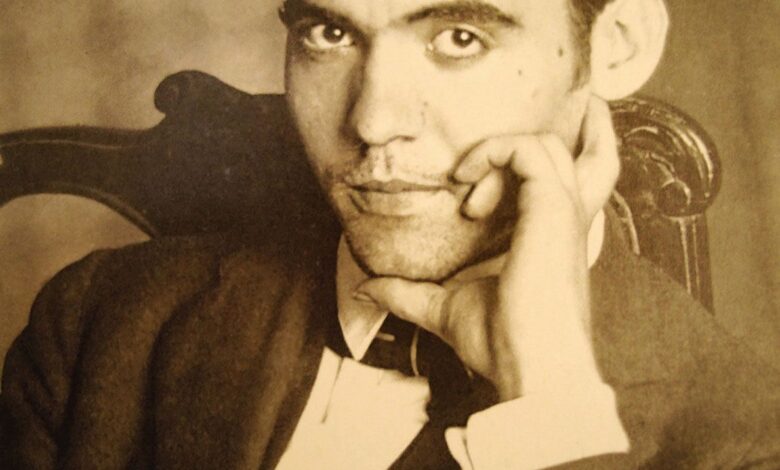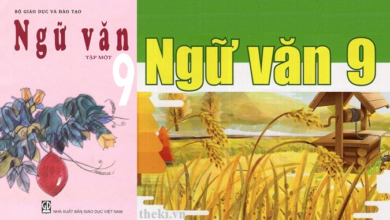Federico garcia lorca | biography, poems, death, & facts

On August 16, 1936, at the beginning of the Spanish Civil War , Federico García Lorca was arrested in Granada by Nationalist forces, who abhorred his homosexuality and his liberal views, and was imprisoned without a trial. On the night of August 18 or 19, he was driven to a remote hillside outside town and shot.
Federico García Lorca enrolled in the University of Granada but was a hapless student best known for his extraordinary talents as a pianist. He took nine years to complete a bachelor’s degree.
The eldest of four children born to a wealthy landowner and his schoolteacher wife, Federico García Lorca grew up in rural Andalusia amid images and social conditions that later influenced his work. At age 10 he moved with his family to Granada , where he attended a private, secular institute and a Roman Catholic public school.
In a career spanning just 19 years, Federico García Lorca resurrected and revitalized the most basic strains of Spanish poetry and helped inaugurate a second Golden Age of the Spanish theater . Lorca was the most important Spanish poet and playwright of the 20th century, and his work still influences writers and artists throughout the world.
Federico García Lorca , (born June 5, 1898, Fuente Vaqueros, Granada province, Spain—died August 18 or 19, 1936, between Víznar and Alfacar, Granada province), Spanish poet and playwright who, in a career that spanned just 19 years, resurrected and revitalized the most basic strains of Spanish poetry and theatre. He is known primarily for his Andalusian works, including the poetry collections Romancero gitano (1928; Gypsy Ballads) and Llanto por Ignacio Sánchez Mejías (1935; “Lament for Ignacio Sánchez Mejías,” Eng. trans. Lament for a Bullfighter), and the tragedies Bodas de sangre (1933; Blood Wedding ), Yerma (1934; Eng. trans. Yerma ), and La casa de Bernarda Alba (1936; The House of Bernarda Alba ). In the early 1930s Lorca helped inaugurate a second Golden Age of the Spanish theatre. He was executed by a Nationalist firing squad in the first months of the Spanish Civil War .
In 1919 Lorca moved to the Residencia de Estudiantes in Madrid, a prestigious and socially progressive men’s residence hall. It remained his home in the Spanish capital for the next decade. His fellow residents included the filmmaker Luis Buñuel and the artist Salvador Dalí , who later became a close companion. In Madrid, Lorca also befriended the renowned older poet Juan Ramón Jiménez and a circle of poets his own age, among them Rafael Alberti , Jorge Guillén , and Pedro Salinas.
The eldest of four children born to a wealthy landowner and his schoolteacher wife, Lorca grew up in rural Andalusia , surrounded by images and social conditions that influenced his work lifelong. At age 10 he moved with his family to Granada, where he attended a private, secular institute in addition to a Catholic public school. Lorca enrolled in the University of Granada but was a hapless student best known for his extraordinary talents as a pianist. He took nine years to complete a bachelor’s degree. Despite plans to become a musician and composer, he turned to writing in his late teens. His first experiments in prose, poetry, and drama reveal an intense spiritual and sexual malaise along with an adolescent devotion to such authors as Shakespeare, Goethe, the Spanish poet Antonio Machado , and the Nicaraguan poet Rubén Darío , father of Hispanic Modernismo , a late and decadent flowering of Romanticism.
Early poetry and plays
A consummate stylist, Lorca sought throughout his career to juxtapose and meld genres. His poems, plays, and prose often evoke other, chiefly popular, forms of music, art, and literature. His first book, Impresiones y paisajes (1918; Impressions and Landscapes), a prose work in the modernista tradition, chronicled Lorca’s sentimental response to a series of journeys through Spain as a university student. Libro de poemas (“Book of Poems”), an uneven collection of predominantly modernista poems culled from his juvenilia, followed in 1921. Both efforts disappointed Lorca and reinforced his inherent resistance to publication, a fact that led to frequent delays in the publication and production of his work. Lorca preferred to perform his poems and plays, and his histrionic recitations drew innumerable admirers.
The Spanish stage director Gregorio Martínez Sierra premiered Lorca’s first full-length play, El maleficio de la mariposa (The Butterfly’s Evil Spell in Five Plays: Comedies and Tragi-Comedies, 1970), a symbolist work about a lovesick cockroach, in Madrid in 1920. Critics and audiences ridiculed the drama, and it closed after four performances. Lorca’s next full-length play, the historical verse drama Mariana Pineda (written 1923; Eng. trans. Mariana Pineda), opened in 1927 in a production with sets by Dalí and received mixed notices.
In the early 1920s, Lorca began experimenting with short, elliptical verse forms inspired by Spanish folk song, Japanese haiku, and contemporary avant-garde poetics. He wrote a prodigious series of brief poems arranged in thematic “suites,” later collected and published in 1983 under the title Suites. (Virtually all of Lorca’s poetry—that contained in the volume under discussion and in the other Spanish volumes mentioned in this biography—has been translated in Collected Poems, 1991). In 1922 Lorca collaborated with the eminent Andalusian composer Manuel de Falla on a festival of cante jondo (“deep song”) in Granada. The endeavour heightened Lorca’s interest in popular Andalusian song, and in a blaze of inspiration he wrote a series of poems based on songs of the Andalusian Gypsies (Roma). Even more compressed than Suites, Poema del cante jondo (written 1921–25, published 1931; Poem of the Deep Song), offers a radical synthesis of the traditional and the avant-garde. The series signaled Lorca’s emergence as a mature poet. His collaboration with Falla further prompted Lorca to investigate the Spanish puppet theatre tradition, and in 1923 he wrote Los títeres de Cachiporra (“The Billy-Club Puppets”), the first of several versions of a puppet play inspired by the classic Andalusian Grand Guignol.
From 1925 to 1928, Lorca was passionately involved with Salvador Dalí. The intensity of their relationship led Lorca to acknowledge, if not entirely accept, his own homosexuality. At Dalí’s urging, the poet began to experiment more boldly with avant-garde currents in the art world, notably surrealism, although he refused to align himself with any movement. In poems such as “Oda a Salvador Dalí” (1925–26; “Ode to Salvador Dalí”), Canciones (written 1924, published 1926; Songs), and a series of abstruse prose poems, Lorca sought to create a more objective poetry, devoid of private sentiment and the “planes of reality.” He joined his contemporaries in exalting Don Luis de Góngora, a 16th-century Spanish poet known for his dispassionate, densely metaphorical verse. Lorca and his fellow poets commemorated the tricentennial of Góngora’s death in 1927 and became known thereafter as the “Generation of 1927.” Lorca also sought to articulate in public lectures his own evolving aesthetic.
Meanwhile, Lorca continued to mine the popular Spanish tradition in his plays La zapatera prodigiosa (written 1924, premiered 1930; The Shoemaker’s Prodigious Wife), a classic farce, and El amor de don Perlimplín con Belisa en su jardín (written 1925, premiered 1933; The Love of Don Perlimplín with Belisa in Their Garden in Five Plays: Comedies and Tragi-Comedies, 1970), a “grotesque tragedy” partially drawn from an 18th-century Spanish comic strip. Both plays reveal themes common to Lorca’s work: the capriciousness of time, the destructive powers of love and death, the phantoms of identity, art, childhood, and sex.
In 1928, with Dalí’s encouragement, Lorca publicly exhibited his drawings. A gifted draughtsman blessed with a startling visual imagination, Lorca produced hundreds of sketches in his lifetime.



